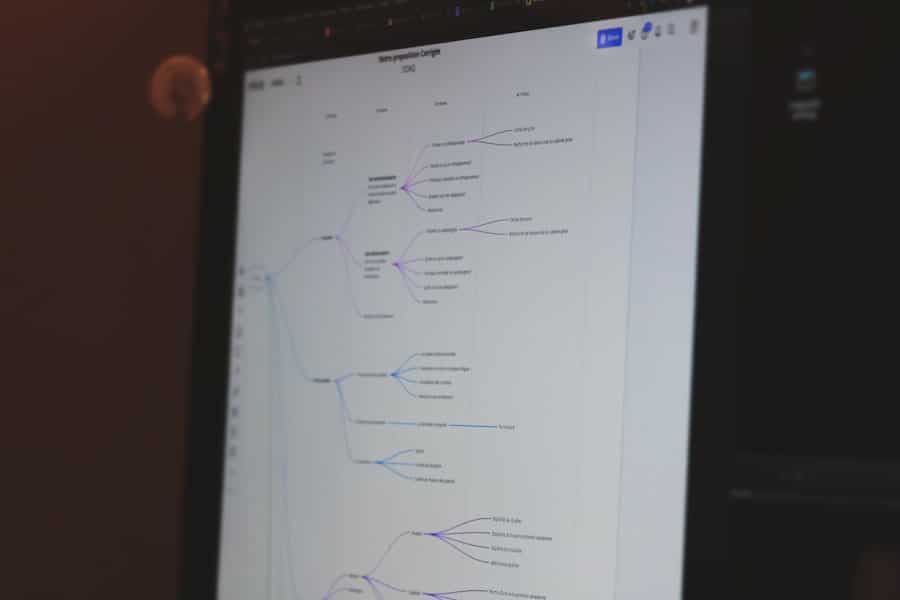Game streaming has emerged as a revolutionary force in the entertainment landscape, transforming how players engage with video games and how audiences consume gaming content. Platforms such as Twitch, YouTube Gaming, and Facebook Gaming have created vibrant ecosystems where gamers can broadcast their gameplay live to viewers around the world. This phenomenon has not only democratized content creation but has also fostered a sense of community among gamers and fans alike.
The allure of watching skilled players navigate complex game worlds, coupled with the interactive nature of live streaming, has led to an explosion in viewership and participation. As the industry continues to evolve, one of the most significant trends shaping the future of game streaming is real-time customization. This concept allows streamers and viewers to personalize their experiences dynamically, tailoring content to individual preferences and enhancing engagement.
The integration of real-time customization into game streaming is not merely a technological advancement; it represents a paradigm shift in how content is created, consumed, and interacted with. By enabling viewers to influence gameplay or customize their viewing experience, real-time customization is poised to redefine the relationship between streamers and their audiences.
Key Takeaways
- Game streaming has become increasingly popular, allowing gamers to broadcast their gameplay in real-time to an audience.
- Real-time customization has emerged as a key trend in game streaming, enabling personalized experiences for viewers and players.
- Real-time customization has a significant impact on game streaming, enhancing engagement and interactivity for both streamers and viewers.
- AI and machine learning play a crucial role in real-time customization, enabling dynamic adjustments and personalized content delivery.
- While real-time customization presents challenges, such as technical complexities, it also offers opportunities for enhanced user experiences and new revenue streams in game streaming.
The Rise of Real-Time Customization
Real-time customization in game streaming refers to the ability for both streamers and viewers to modify various aspects of the gaming experience on-the-fly. This can include altering game settings, changing visual elements, or even influencing gameplay mechanics through viewer interactions. The rise of this trend can be attributed to several factors, including advancements in technology, the increasing demand for personalized content, and the growing importance of viewer engagement in the streaming ecosystem.
One of the key drivers behind real-time customization is the proliferation of interactive technologies that allow for seamless integration between games and streaming platforms. For instance, tools like Streamlabs and OBS (Open Broadcaster Software) have made it easier for streamers to incorporate overlays, alerts, and interactive elements into their broadcasts. These tools enable viewers to engage with the stream in meaningful ways, such as voting on in-game decisions or triggering special effects during gameplay.
As a result, streamers can create a more immersive experience that keeps viewers invested in the action. Moreover, the rise of social media has played a crucial role in fostering a culture of customization. Gamers are increasingly seeking unique experiences that reflect their personal tastes and preferences.
This desire for individuality has led to a demand for features that allow for real-time modifications during streams. As platforms continue to innovate and introduce new features that facilitate customization, streamers are finding new ways to captivate their audiences and differentiate themselves in a crowded market.
The Impact of Real-Time Customization on Game Streaming

The impact of real-time customization on game streaming is profound, affecting not only how content is created but also how it is consumed. One of the most significant changes is the shift towards a more interactive viewing experience. Traditional passive consumption of media is being replaced by active participation, where viewers can influence the direction of gameplay or contribute to the narrative in real-time.
This interactivity fosters a deeper connection between streamers and their audiences, as viewers feel more invested in the outcome of the stream. For example, some streamers have implemented systems where viewers can spend channel points or use donations to trigger specific events within the game. This could range from altering the difficulty level to introducing unique challenges that the streamer must overcome.
Such interactions not only enhance viewer engagement but also create memorable moments that can lead to increased sharing and virality across social media platforms. The ability for viewers to impact gameplay directly transforms them from mere spectators into active participants, enriching the overall experience. Additionally, real-time customization has implications for content diversity.
This adaptability allows for a broader range of content that caters to various audience segments. For instance, a streamer might host themed nights where viewers can vote on which game to play or what challenges to undertake.
This flexibility not only keeps content fresh but also encourages community involvement, as viewers feel their opinions matter in shaping the stream.
The Role of AI and Machine Learning in Real-Time Customization
Artificial intelligence (AI) and machine learning are playing an increasingly vital role in enhancing real-time customization within game streaming. These technologies enable platforms to analyze vast amounts of data related to viewer behavior, preferences, and interactions, allowing for more personalized experiences. By leveraging AI algorithms, streaming platforms can offer tailored recommendations for both games and content creators based on individual viewer habits.
For instance, AI can analyze a viewer’s past interactions with a streamer—such as which games they watched most frequently or which types of interactions they engaged with—to suggest similar streams or games that align with their interests. This level of personalization not only enhances viewer satisfaction but also increases retention rates as audiences are more likely to return to content that resonates with them. Moreover, machine learning can facilitate real-time adjustments during streams based on viewer engagement metrics.
If a particular interactive element is receiving a high level of participation, AI systems can identify this trend and suggest further enhancements or similar features that could be introduced. This dynamic feedback loop allows streamers to adapt their content on-the-fly, ensuring that they remain responsive to audience preferences and maximizing engagement.
Challenges and Opportunities for Real-Time Customization in Game Streaming
While real-time customization presents numerous opportunities for enhancing game streaming experiences, it also comes with its share of challenges. One significant hurdle is the technical complexity involved in implementing these features effectively. Streamers must navigate various software tools and integrations to create seamless interactive experiences without compromising stream quality or performance.
This learning curve can be daunting for newcomers who may lack technical expertise. Additionally, there are concerns regarding viewer overload. With an abundance of interactive options available, viewers may feel overwhelmed by choices, leading to decision fatigue.
Striking the right balance between offering customization options and maintaining a coherent viewing experience is crucial for streamers aiming to keep their audiences engaged without causing confusion or frustration. On the flip side, these challenges present opportunities for innovation within the industry. As technology continues to advance, new tools and platforms are emerging that simplify the process of integrating real-time customization features into streams.
Companies are investing in user-friendly solutions that empower streamers to create engaging content without requiring extensive technical knowledge. Furthermore, as audiences become more accustomed to interactive experiences across various media platforms, there is an increasing demand for innovative features that enhance viewer participation. Streamers who successfully navigate these challenges stand to gain a competitive edge by offering unique experiences that resonate with their audiences.
The Future of Real-Time Customization in Game Streaming

The future of real-time customization in game streaming is poised for significant growth as technology continues to evolve and audience expectations shift. One potential direction is the increased integration of virtual reality (VR) and augmented reality (AR) into streaming experiences. These technologies offer immersive environments where viewers can interact with both the streamer and the game world in unprecedented ways.
Imagine a scenario where viewers wearing VR headsets can influence gameplay by physically interacting with virtual elements or even joining the streamer in a shared digital space. Moreover, advancements in blockchain technology could revolutionize how real-time customization is implemented within game streaming ecosystems. Smart contracts could enable secure transactions for viewer interactions, allowing audiences to purchase unique customization options or experiences directly from streamers.
This could create new revenue streams for content creators while providing viewers with exclusive opportunities to shape their viewing experiences. As AI continues to advance, we may also see more sophisticated algorithms capable of predicting viewer preferences with greater accuracy. This could lead to hyper-personalized content delivery where each viewer receives a unique streaming experience tailored specifically to their tastes and interests.
Such developments would further blur the lines between content creation and consumption, fostering an even deeper connection between streamers and their audiences.
The Potential Benefits for Gamers and Content Creators
The integration of real-time customization into game streaming offers numerous benefits for both gamers and content creators alike. For gamers, the ability to influence gameplay or customize their viewing experience enhances engagement and enjoyment. This interactivity fosters a sense of community among viewers who share similar interests and allows them to connect with one another through shared experiences during live streams.
For content creators, real-time customization opens up new avenues for creativity and innovation. Streamers can experiment with different formats and styles based on audience feedback, leading to more diverse content offerings that cater to various viewer preferences. This adaptability not only keeps content fresh but also encourages community involvement as viewers feel their opinions matter in shaping the stream.
Additionally, real-time customization can lead to increased monetization opportunities for streamers. By offering exclusive interactive features or personalized experiences for viewers willing to pay for them, content creators can generate additional revenue streams beyond traditional ad revenue or subscriptions. This financial incentive encourages streamers to invest time and resources into creating engaging interactive experiences that resonate with their audiences.
Furthermore, as real-time customization becomes more prevalent, it may attract new audiences who are drawn to the interactive nature of game streaming. Gamers who may have previously been passive consumers might find themselves more inclined to participate actively when they have the opportunity to influence gameplay or engage with their favorite streamers directly.
The Evolution of Game Streaming with Real-Time Customization
The evolution of game streaming is intricately linked with the rise of real-time customization, which has transformed how content is created and consumed within this dynamic landscape. As technology continues to advance and audience expectations shift towards more interactive experiences, real-time customization will play an increasingly pivotal role in shaping the future of gaming entertainment. The potential benefits for both gamers and content creators are vast, ranging from enhanced engagement and community building to new monetization opportunities that empower streamers to innovate continuously.
As we look ahead, it is clear that real-time customization will not only redefine the relationship between streamers and their audiences but also pave the way for exciting developments that will further enrich the gaming experience for all involved. In this rapidly evolving environment, those who embrace these changes stand poised to thrive as they navigate the complexities of real-time customization while delivering engaging content that resonates deeply with their audiences. The future of game streaming promises an exciting journey filled with possibilities as we witness firsthand how technology continues to reshape our interactions with games and each other.
In a recent article discussing the future of game streaming with real-time customization, it is important to consider the role of efficient software in enhancing user experience. One related article that delves into the realm of software efficiency is this piece on the best software to clone HDD to SSD.
By staying informed about the latest software advancements, users can ensure a smooth and efficient gaming experience while also maximizing productivity in other areas.
FAQs
What is game streaming with real-time customization?
Game streaming with real-time customization is a technology that allows players to stream and play video games over the internet, while also being able to customize and modify certain aspects of the game in real-time.
How does game streaming with real-time customization work?
Game streaming with real-time customization works by using cloud-based servers to run the game and stream it to the player’s device. The player can then make real-time changes to the game, such as adjusting difficulty levels, changing in-game assets, or modifying game mechanics.
What are the benefits of game streaming with real-time customization?
Some benefits of game streaming with real-time customization include the ability for players to personalize their gaming experience, access to high-quality games without the need for expensive hardware, and the potential for developers to create dynamic and interactive gaming experiences.
What are the challenges of game streaming with real-time customization?
Challenges of game streaming with real-time customization include potential latency issues, the need for robust internet connections, and the complexity of implementing real-time customization features within games.
What is the future of game streaming with real-time customization?
The future of game streaming with real-time customization is likely to see continued advancements in technology, improved streaming infrastructure, and the development of more sophisticated real-time customization tools for both players and game developers.

